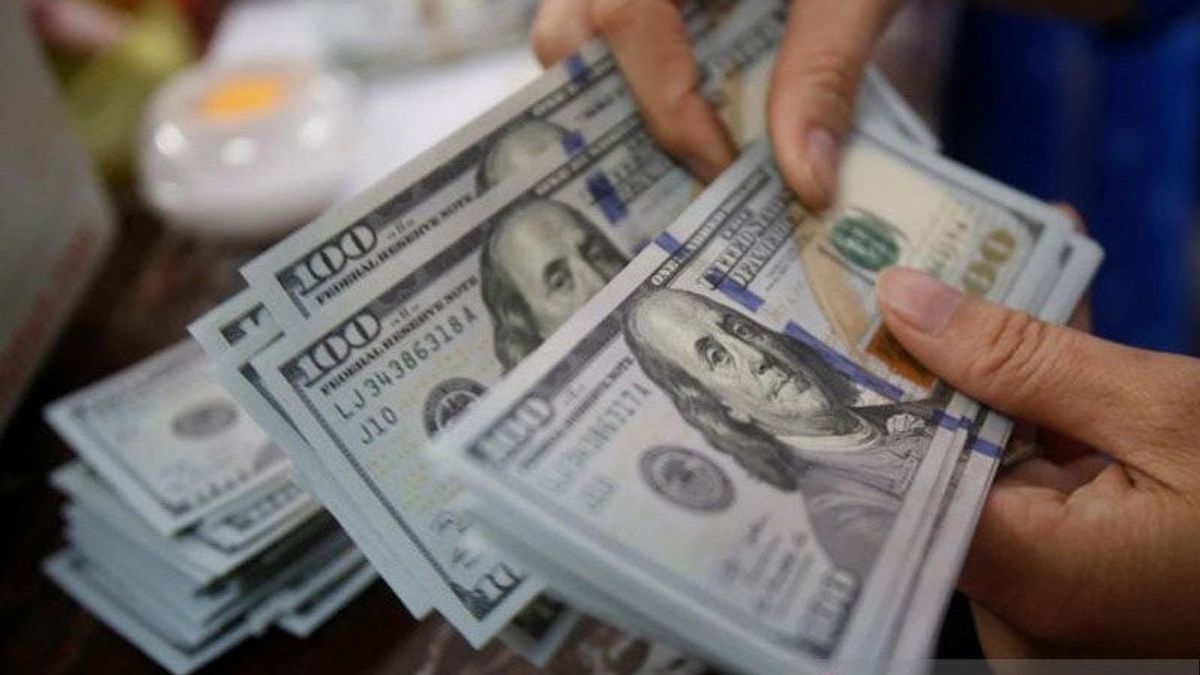JAKARTA - Bank Indonesia (BI) reported that there was a decline in foreign debt (ULN) by US$4.2 billion to US$411.5 billion at the end of the first quarter of 2022 from previously US$415.7 billion in the fourth quarter of 2021.
"This development was caused by a decline in the position of public sector external debt, namely the government and the central bank, as well as the private sector", said Head of the BI Communications Department, Erwin Haryono, in a press statement quoted Friday, May 20.
According to Erwin, on an annual basis, the position of external debt in the first quarter of 2022 experienced a contraction of 1.1 percent year on year (YoY), deeper than the contraction in the previous quarter of 0.3 percent.
In detail, he explained that the government's debt in the first three months of this year was 196.2 billion US dollars. This figure is down from the record at the end of 2021 which amounted to 200.2 billion US dollars.
"The decline occurred in line with several series of maturing Government Securities (SBN), both domestic SBN and foreign currency SBN, as well as the net repayment of maturing loans during the January to March 2022 period, most of which were bilateral loans", he said.
Erwin added that the government's foreign debt was used to meet priority spending needs, including the health services sector and social activities, education, defense, compulsory social security, as well as the construction and service sectors.
"The government is committed to maintaining credibility by fulfilling the obligation to pay principal and interest on debt promptly, as well as managing external debt in a prudent, credible, and accountable manner", he said.
VOIR éGALEMENT:
Meanwhile, in the private sector, the position of private external debt in the first quarter of 2022 was recorded at 206.4 billion US dollars, down from 206.5 billion US dollars in the fourth quarter of 2021. This development was caused by the payment of foreign loans and maturing debt securities.
By sector, the largest private external debt comes from the financial and insurance services sector, electricity procurement, manufacturing industry sector, and mining and quarrying.
For information, Indonesia's external debt in the first quarter of 2022 remained under control, as reflected in the ratio of Indonesia's external debt to Gross Domestic Product (GDP) which was maintained at around 33.7 percent, down from the ratio in the previous quarter of 35.0 percent.
BI itself claims that Indonesia's external debt structure remains healthy with the dominance of long-term external debt which has a share of 87.9 percent of the total.
“Bank Indonesia and the government continue to strengthen coordination in monitoring the development of external debt, supported by the application of prudential principles in their management. The role of external debt will also continue to be optimized in supporting development financing and encouraging national economic recovery, by minimizing risks that can affect economic stability", concluded Erwin.
The English, Chinese, Japanese, Arabic, and French versions are automatically generated by the AI. So there may still be inaccuracies in translating, please always see Indonesian as our main language. (system supported by DigitalSiber.id)













